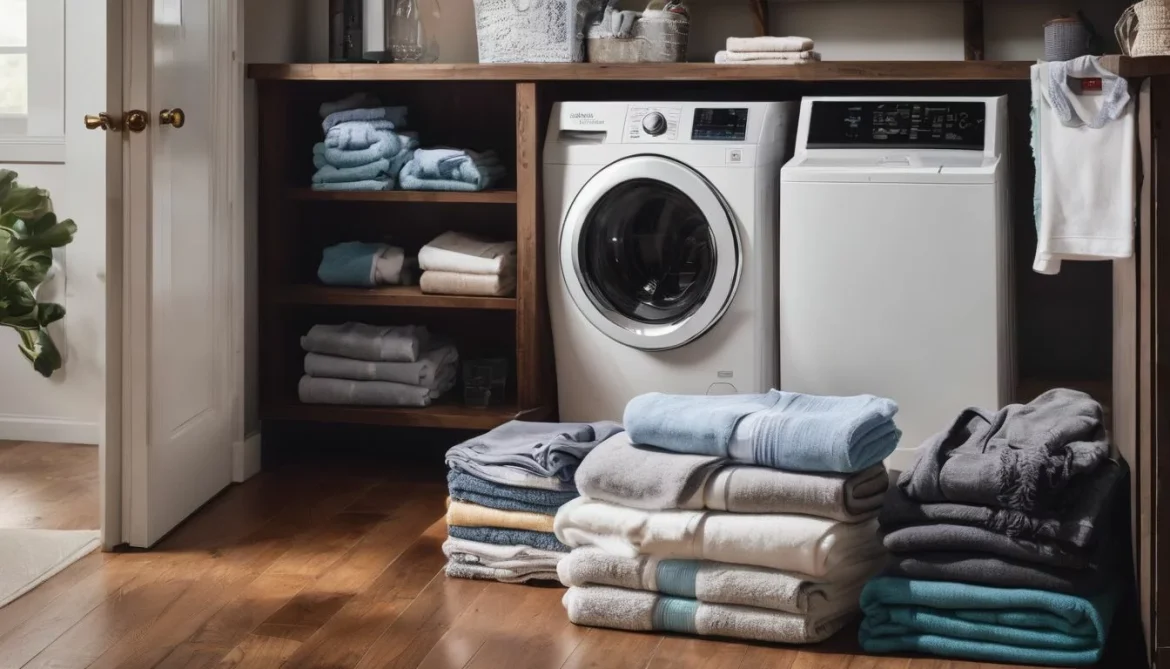Doing the laundry and dry cleaning isn’t just time-consuming, it’s also expensive. The main cost is electricity but you also pay for other items, like cleaning services and detergent.
For many homeowners, these expenses feel unacceptable. Sure, you are okay with paying a little money for clean clothes. But when it’s hundreds of dollars a month, you know something’s gone wrong.
That’s where this post can help. We look at various techniques to save money on laundry and dry cleaning. You will learn to cut costs and still benefit from the freshest clothes. Here’s what to do:
Cut Down On Washing
The most obvious strategy is to cut down on your washing frequency. Using garments and clothes multiple times between washes cuts your bills and prevents endless piles of laundry from mounting up in your linen basket daily.
If you aren’t exercising, you can wear most clothing items for two or three days before they must go in the machine. You can also increase the time between washes by wearing undergarments, like vests and pants, to keep body odor and sweat at bay.
Ideally, you want to be washing clothes once or twice a week. More than that means you are probably wearing them too often.
Don’t Overload Your Washer
At the same time, avoid overloading your washer. Cramming it full with a week’s worth of washing to save money makes it work less efficiently and can make clothes smell worse.
Most manufacturers will tell you how much you can fill the barrel. Most recommend leaving around a third of the space for the washing action to do its magic.
These days, you can buy washing machines with overload warnings. These machines tell you when they are full and when to take items out.
Wash Using Cooler Temperatures
Another trick is to wash clothes in cooler temperatures. Eliminating the need to heat water as much reduces energy consumption and makes the whole process more efficient.
Most washing machines will let you wash up to 200°F. However, that requires tremendous energy and should only be used for fabrics that can tolerate it. Cooler washes usually operate between 60°F and 100°F. These temperatures don’t provide the same level of extreme cleaning action. But they are sufficient for lightly soiled items when combined with the right detergent.
Switch To A More Concentrated Laundry Detergent
Switching to more concentrated laundry detergents can also cut costs by allowing you to use less in every wash. The best-value options let you run two to three times more cycles than conventional products.
Check for brands in your local grocery store promising to pack more punch per scoop. These options are often less expensive because they are smaller. The lighter it is, the more these shipping, material, and transport costs decline.
Use Dryer Balls
You could also try using dryer balls at the laundromat (or at home). These are plastic balls you add to the dryer to help fluff up and aerate items in the machine, allowing it to work more efficiently.
Dryer balls are inexpensive and will last a long time without requiring replacement. Most laundromats and dryer manufacturers support them, but always check before you add them, just in case.
Maintain Your Dryer
You can improve the efficiency of your dryer further by maintaining it regularly. Getting someone over to ensure all the internals are running as they should be can reduce energy usage and make units last longer.
The main problem with dryers is lint accumulation – the buildup of debris from items made of fabric. It gets stuck when it builds up on the filter, making the dryer work hard and consume more energy.
Vents can also be problematic because they become a fire hazard once lint-like material builds up inside. Cleaning them out prevents this.
Air Dry Your Clothes
Of course, you can bypass the dryer entirely by air-drying your clothes. This method is incredibly inexpensive and can sometimes make your clothes smell fresher.
Air-drying clothes isn’t usually an option during the winter. But it is possible most of the year (depending on your location). Putting clothes out to dry in direct sunlight is the best option because the UV light sterilizes them quickly (preventing the buildup of nasty bacteria that cause bad smells). However, you can also get indoor drying tents that extract moisture from the air and supply additional heat.
Dry Clean At Home
Dry cleaning at home is another way to save money. This approach lets you avoid paying hefty service fees while washing costly items like suits.
You’ll need a special kit to do your dry cleaning at home containing dryer sheets with cleaning agents, stain removers, wrinkle-release sprays, and reusable bags. These items help you get the perfect finish.
Just make sure you double-check the dry cleaning instructions on the label. Care information can differ considerably between items, even if they look similar.
Use A Stain Remover
Many people wind up washing clothing multiple times because of difficult-to-remove stains. Garments come out of the wash looking dirty and have to go straight back in again, usually at a higher temperature setting.
However, stain remover products can sometimes avoid this (and lower costs). These contain special (often proprietary) ingredients that penetrate the fabric more than conventional detergents. Powerful cleaning action combines with detergents to lift spills from clothing with greater ease.
Shop Around
Finally, shopping for the best deal can help you save money on dry cleaning. Laundromat prices vary considerably even within the same city, so always check around and look for those offering discounted prices.
Some laundromats also run weekly or monthly special offers you can use to enjoy their services for even less.
Wrapping Up
So there you have it: some actionable tips to save money on dry cleaning and laundry. Even if you only adopt a few of these suggestions, it can lower your costs significantly.
Don’t forget also that saving money helps you live more sustainably. Lower costs usually imply reduced energy use and longer-lasting machines that don’t require replacement every few years.


